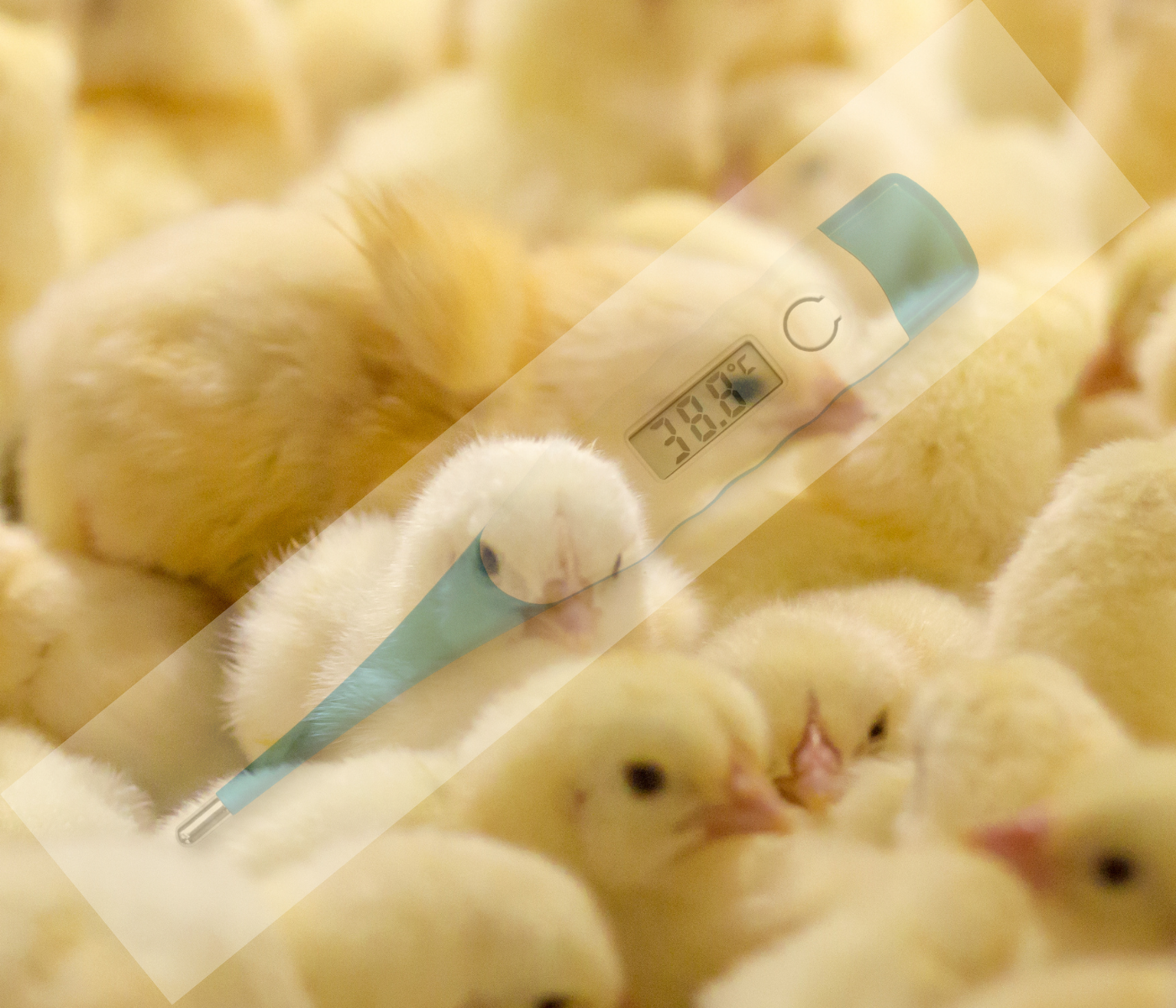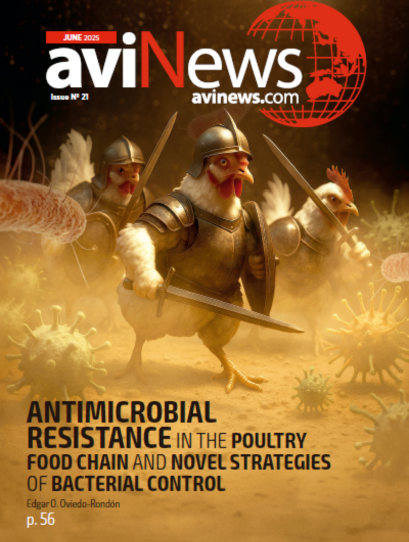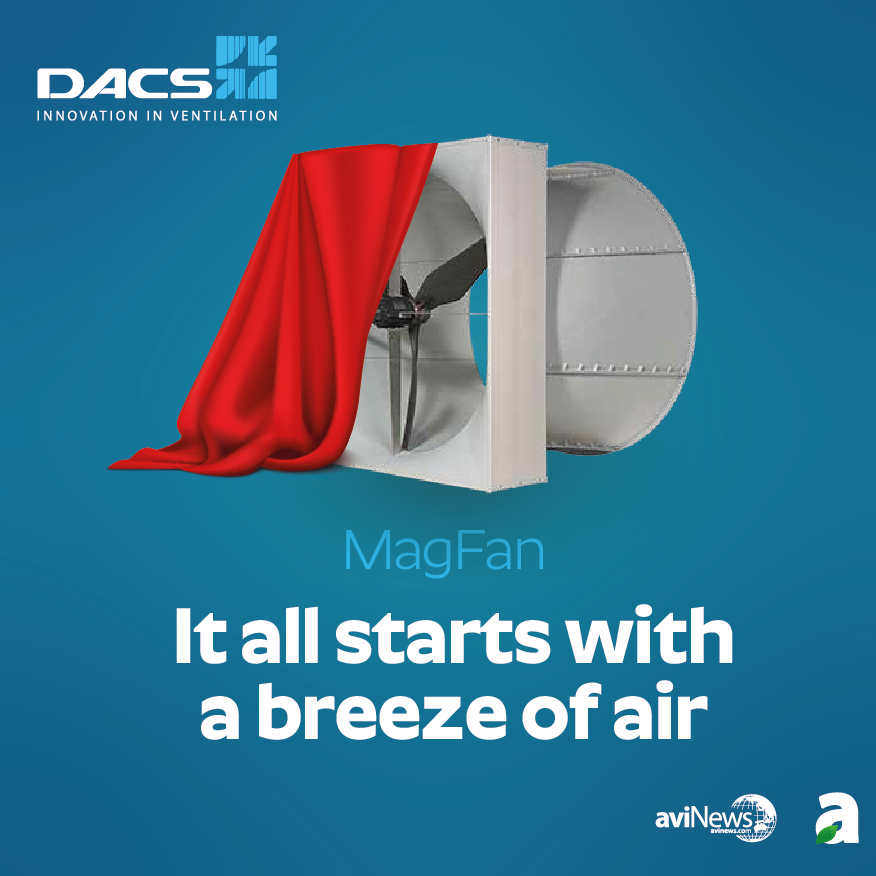Content available at: Español (Spanish)
At the time of hatching in poultry there are three physiological systems that are not fully developed:
- Digestive
- Immune
- Temperature regulation
In this article we will talk about temperature regulation
Body temperature at hatch
Upon hatching, the birds are poikilothermic animals: their body temperature will rise or fall depending on the environmental temperature, requiring a metabolic effort by the birds. It will take around 4 days for chicks from adult flocks and 5 to 6 days for birds from young flocks for the thermoregulatory system to behave homeothermically – constant body temperature.
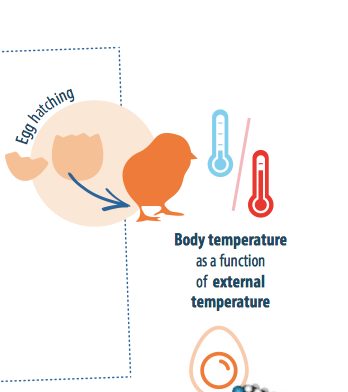
Comfort zone
There is a range of body temperature known as the comfort zone, where the birds are comfortable with the temperature that surrounds them:

The best way to “find” the comfort zone is to measure the birds’ cloacal temperature.
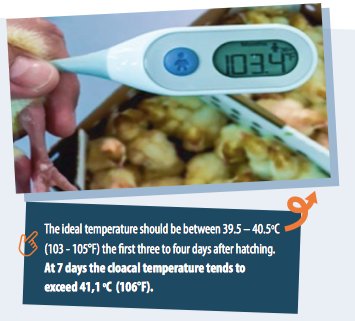
Where to measure the cloaca temperature?
This information will help us adjust the temperature and ventilation of the hatcher according to the flock that are currently inside the machine.

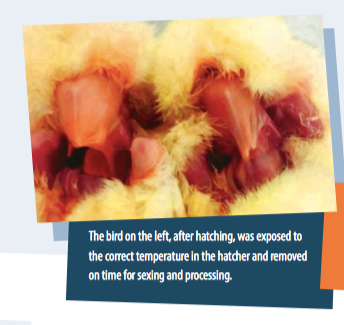
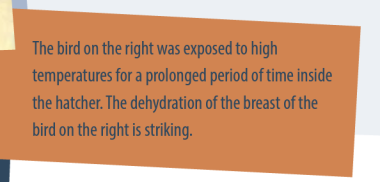
During sexing, vaccination or in beak or spur treatments, the temperature of the birds will drop to ranges of 38.3 – 38.9 ºC (101-102 ° F).
Particular care should be taken with birds after being exposed to spray vaccines, as their temperature can drop greatly if the drop is not correct. At the end of these operations, in the waiting room to be loaded in the truck, the birds must recover their body temperature between 39.5 – 40.5 ºC (103-105 ° F). 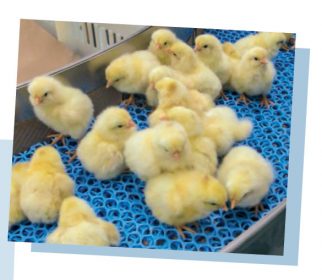
During transportation
Upon arrival at the destination farm, as the chicks are being unloaded from the truck, it must be monitored the temperature of the birds inside the boxes.
Preferably, the temperature of birds from different parts of the truck should be monitored, particularly when it is a large truck.
At the farm
In addition to the correct air temperature of
Keep up to date with our newsletters
Receive the magazine for free in digital version
REGISTRATION
ACCESS
YOUR ACCOUNT
LOGIN
Lost your password?
